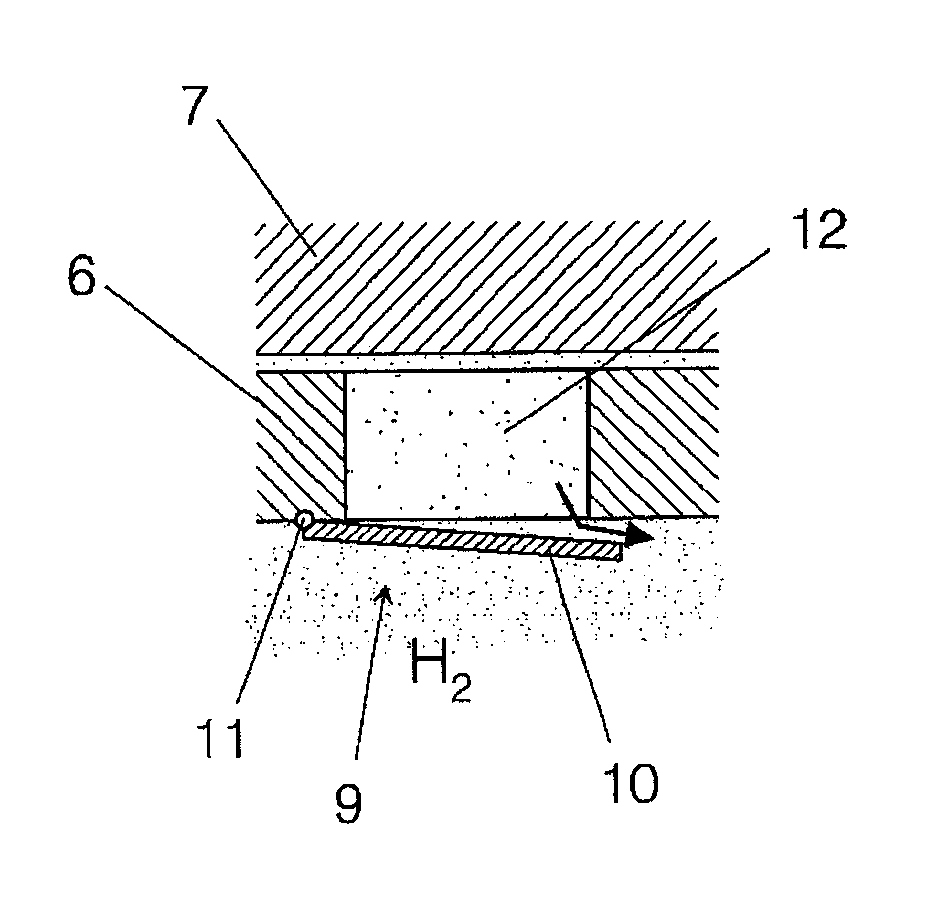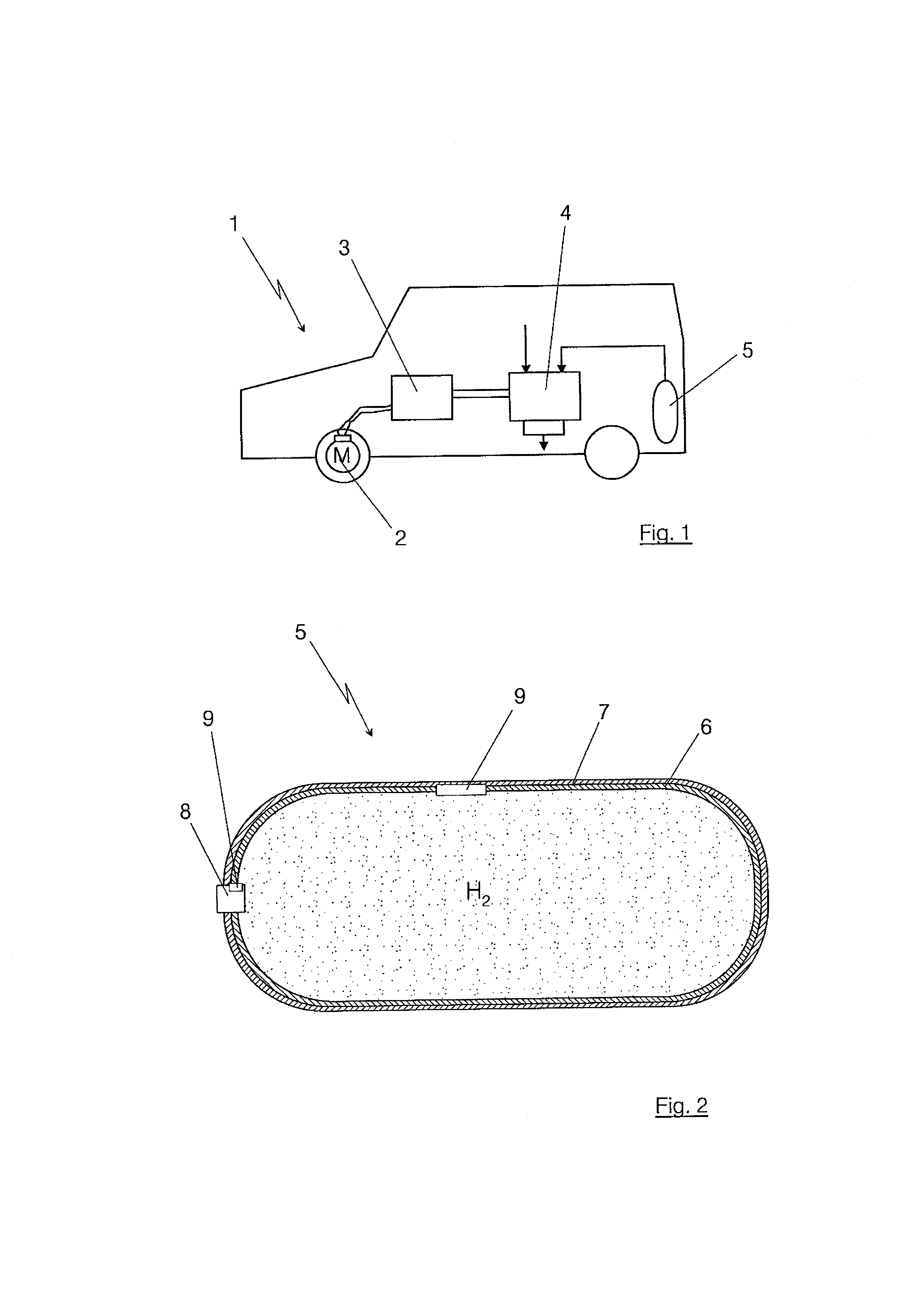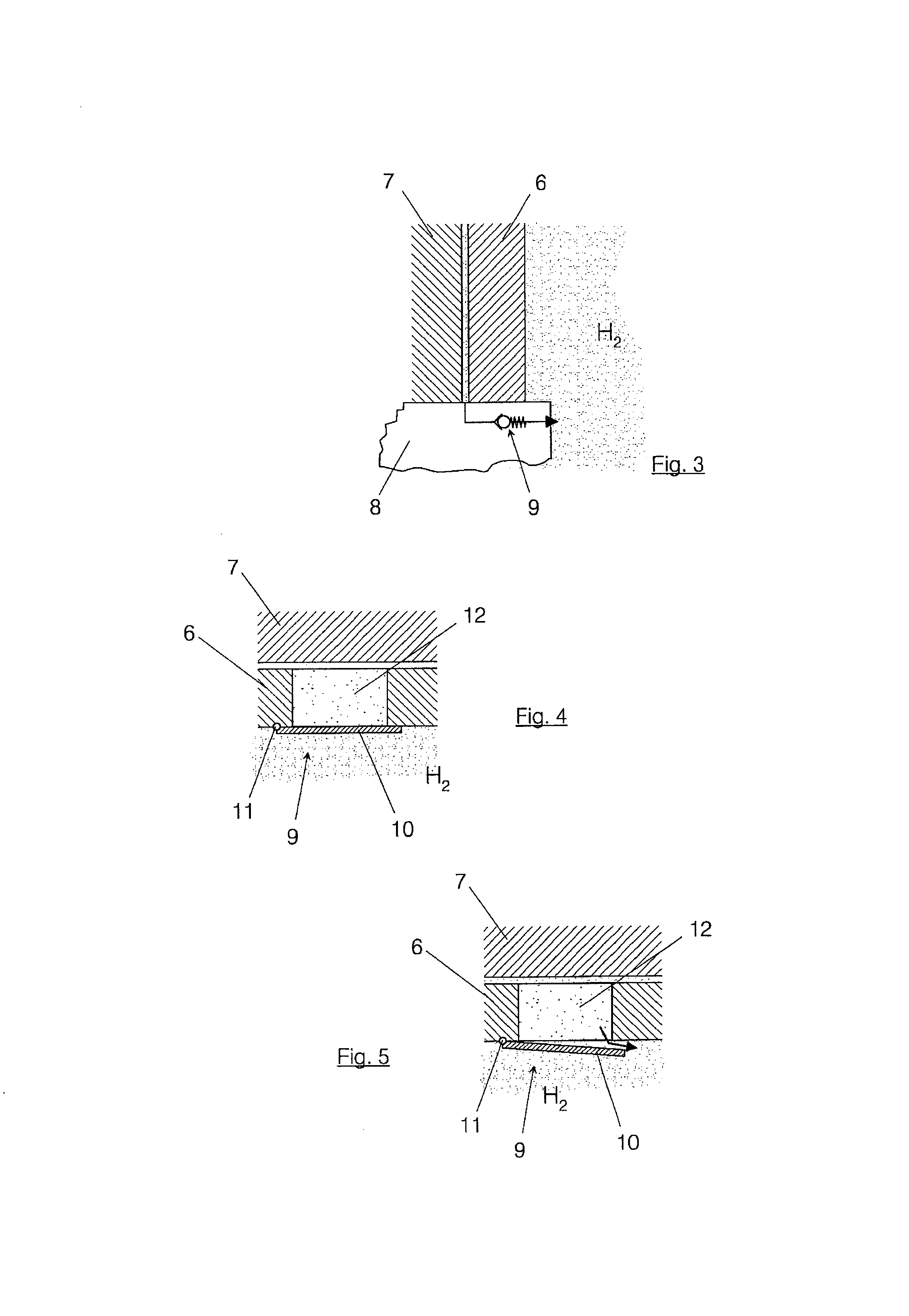Device for Storing Low-Molecular Gases
- Summary
- Abstract
- Description
- Claims
- Application Information
AI Technical Summary
Benefits of technology
Problems solved by technology
Method used
Image
Examples
Embodiment Construction
[0024]FIG. 1 illustrates a vehicle 1, which is principally driven by means of an electric motor 2 indicated in the region of the wheels, whereby this electric motor 2 is supplied via an electronic power unit 3 with electrical power from a fuel cell 4 in a manner known in itself. The electronic power unit 3 can thereby further comprise an electric intermediate storage element, for example a battery. The intermediate storage element can be used in particular to receive recovered brake energy. Oxygen or air and hydrogen H2 are fed to the fuel cell 4 in a known manner in order to produce the electrical power. The hydrogen comes from one or more devices 5 arranged distributed around the vehicle 1 for storing hydrogen H2 under high pressure. The device or the compressed gas storage element 5 is typically operated at a pressure level of for example 350 or 700 bar and is supposed to be formed in the exemplary embodiment shown here as a so-called type IV compressed gas storage element 5.
[002...
PUM
| Property | Measurement | Unit |
|---|---|---|
| Pressure | aaaaa | aaaaa |
| Pressure | aaaaa | aaaaa |
| Expansion enthalpy | aaaaa | aaaaa |
Abstract
Description
Claims
Application Information
 Login to View More
Login to View More - R&D Engineer
- R&D Manager
- IP Professional
- Industry Leading Data Capabilities
- Powerful AI technology
- Patent DNA Extraction
Browse by: Latest US Patents, China's latest patents, Technical Efficacy Thesaurus, Application Domain, Technology Topic, Popular Technical Reports.
© 2024 PatSnap. All rights reserved.Legal|Privacy policy|Modern Slavery Act Transparency Statement|Sitemap|About US| Contact US: help@patsnap.com










